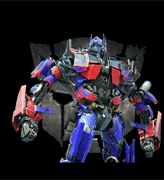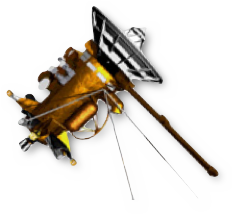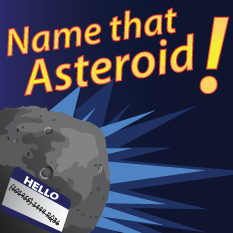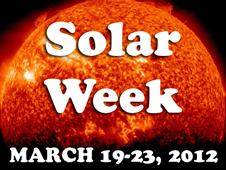 NASA has opened registration for the 2012 OPTIMUS PRIME Spinoff Video Contest. Featuring OPTIMUS PRIME, the leader from the popular TRANSFORMERS brand, the contest highlights spinoffs from NASA technologies that are used on Earth. The goal is to help students understand the benefits of NASA technology to their daily lives.
NASA has opened registration for the 2012 OPTIMUS PRIME Spinoff Video Contest. Featuring OPTIMUS PRIME, the leader from the popular TRANSFORMERS brand, the contest highlights spinoffs from NASA technologies that are used on Earth. The goal is to help students understand the benefits of NASA technology to their daily lives.
Each student, or group of students, will submit a three- to five-minute video on a selected NASA spinoff technology listed in NASA’s 2011 “Spinoff” publication. Videos must demonstrate an understanding of the NASA spinoff technology and the associated NASA mission, as well as the commercial application and public benefit associated with the spinoff technology.
Participants must register for the contest by Dec. 15, 2012.
Video entries will be posted on the NASA YouTube channel, and the public will be responsible for the first round of judging. The top five submissions from each of the three grade groups (elementary [3rd-5th], middle [6th-8th] and high school [9th-12th]) will advance for final judging. A NASA panel will select a winning entry from each group. The students submitting the winning entries will be the guests of honor at the OPTIMUS PRIME Spinoff Contest awards ceremony in May 2013. While there, the winners will receive the OPTIMUS PRIME Spinoff Contest trophy and have the opportunity to meet NASA VIPs, astronauts and actor Peter Cullen, who voices the character OPTIMUS PRIME.
TRANSFORMERS and OPTIMUS PRIME are trademarks of Hasbro and are used with permission. © 2012 Hasbro. All Rights Reserved.
For more information, visit https://www.nasa.gov/centers/goddard/news/releases/2012/12-077.html.
Questions about this contest should be directed to Darryl Mitchell at Darryl.R.Mitchell@nasa.gov.
 Students and educators are invited to join NASA for the Sally Ride EarthKAM Summer 2013 Mission from July 9-12, 2013. Guide your students in hands-on research as they program a camera aboard the International Space Station to take pictures of specific locations on Earth. The optional online curriculum at the Sally Ride EarthKAM website is designed for middle school students, but could easily be adapted for other grade levels. All students and educators are invited to participate, including participants in summer and after-school programs.
Students and educators are invited to join NASA for the Sally Ride EarthKAM Summer 2013 Mission from July 9-12, 2013. Guide your students in hands-on research as they program a camera aboard the International Space Station to take pictures of specific locations on Earth. The optional online curriculum at the Sally Ride EarthKAM website is designed for middle school students, but could easily be adapted for other grade levels. All students and educators are invited to participate, including participants in summer and after-school programs.
 NASA wants to launch a picture of you on the final space shuttle mission.
NASA wants to launch a picture of you on the final space shuttle mission. NASA has opened registration for the 2012 OPTIMUS PRIME Spinoff Video Contest. Featuring OPTIMUS PRIME, the leader from the popular TRANSFORMERS brand, the contest highlights spinoffs from NASA technologies that are used on Earth. The goal is to help students understand the benefits of NASA technology to their daily lives.
NASA has opened registration for the 2012 OPTIMUS PRIME Spinoff Video Contest. Featuring OPTIMUS PRIME, the leader from the popular TRANSFORMERS brand, the contest highlights spinoffs from NASA technologies that are used on Earth. The goal is to help students understand the benefits of NASA technology to their daily lives.  Did you know you may be able see the International Space Station from your home? As the third brightest object in the sky, after the sun and moon, the space station is easy to see if you know where and when to look for it.
Did you know you may be able see the International Space Station from your home? As the third brightest object in the sky, after the sun and moon, the space station is easy to see if you know where and when to look for it.
 Students worldwide have an opportunity to name an asteroid from which an upcoming NASA mission will return samples to Earth. Scheduled to launch in 2016, the mission is called the Origins-Spectral Interpretation-Resource Identification-Security-Regolith Explorer, or OSIRIS-REx. The competition is open to students under age 18. Each contestant can submit one name, up to 16 characters long. Entries must include a short explanation and rationale for the name. The contest deadline is Dec. 2, 2012.
Students worldwide have an opportunity to name an asteroid from which an upcoming NASA mission will return samples to Earth. Scheduled to launch in 2016, the mission is called the Origins-Spectral Interpretation-Resource Identification-Security-Regolith Explorer, or OSIRIS-REx. The competition is open to students under age 18. Each contestant can submit one name, up to 16 characters long. Entries must include a short explanation and rationale for the name. The contest deadline is Dec. 2, 2012. Here’s an exciting opportunity to involve your students in the unique RealWorld-InWorld NASA Engineering Design Challenge to solve real NASA-related problems.
Here’s an exciting opportunity to involve your students in the unique RealWorld-InWorld NASA Engineering Design Challenge to solve real NASA-related problems. Today, Dr. Michelle Thaller from Goddard Space Flight Center will answer student questions from 1 – 2 p.m. EDT. Dr. Thaller’s research interests are hot stars, colliding stellar winds, binary star evolution and evolved stellar companions. Don’t miss this opportunity to have your students ask Dr. Thaller about her research and the path that led her to NASA.
Today, Dr. Michelle Thaller from Goddard Space Flight Center will answer student questions from 1 – 2 p.m. EDT. Dr. Thaller’s research interests are hot stars, colliding stellar winds, binary star evolution and evolved stellar companions. Don’t miss this opportunity to have your students ask Dr. Thaller about her research and the path that led her to NASA.